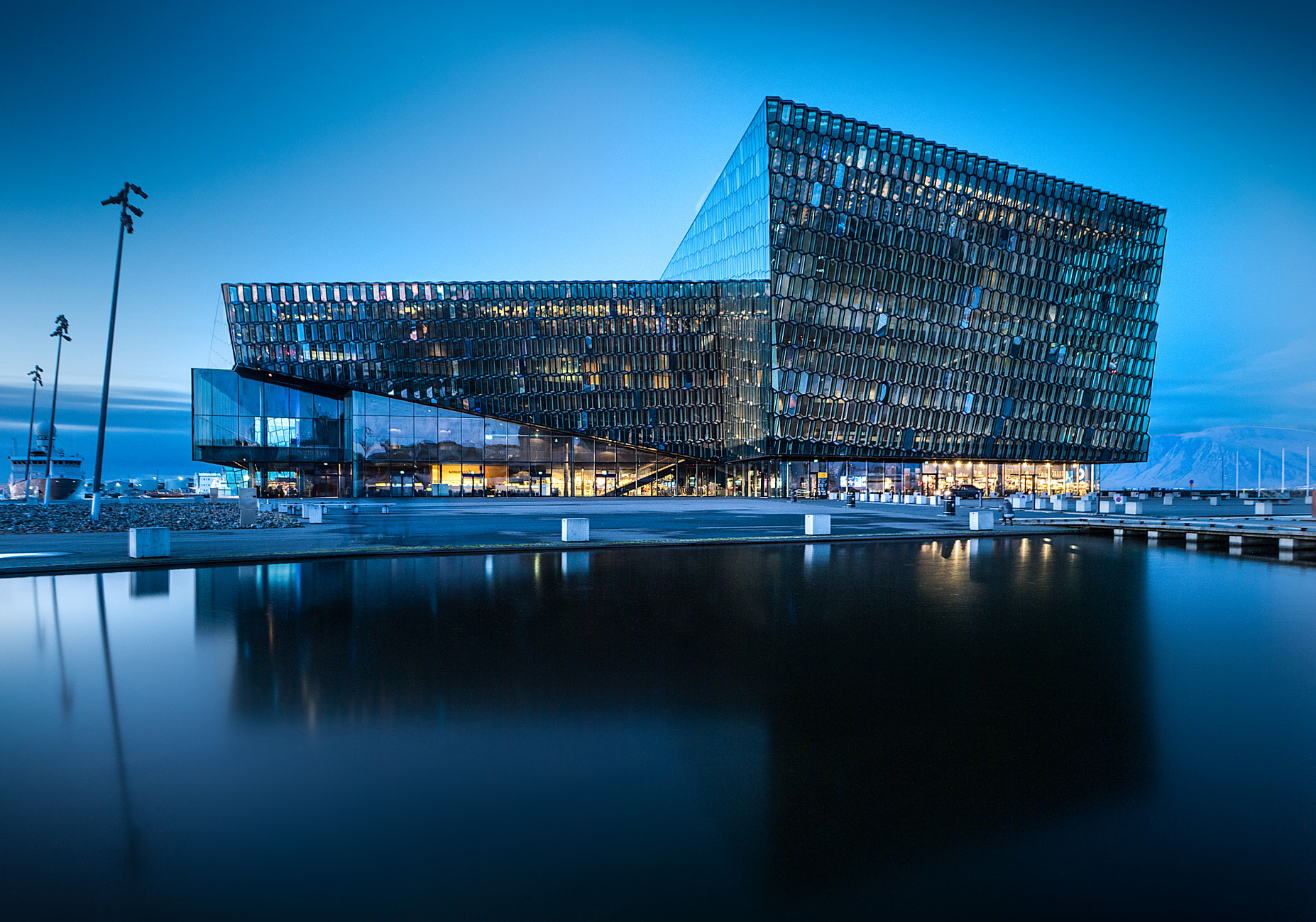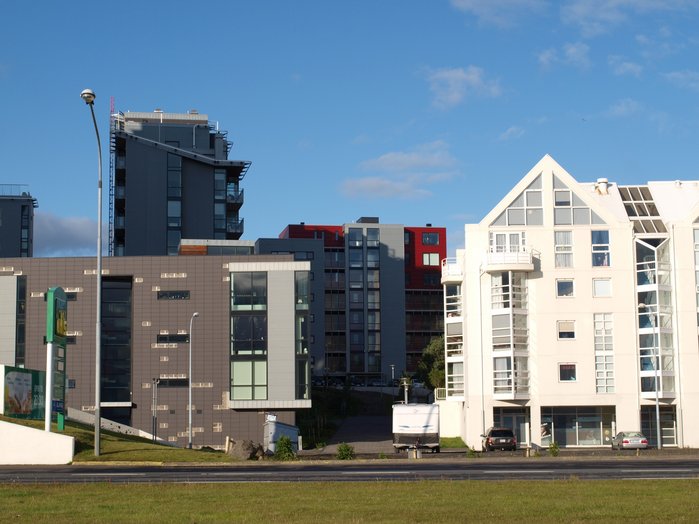Prominent 21st century architecture in Iceland
From infrastructure and housing projects to culture and recreation centres, recent Icelandic architecture includes a range of design directions, among them the neo-modernism characteristic of the Nordics.

A series of expressive infrastructure projects – highway bridges, interchanges, bicycle crossings, scenic viewing platforms, and pedestrian bridges – have been executed throughout Iceland by Studio Granda, Teiknidyofan Trö?, and Arkís Arkitektar.
In Reykjavik, the Harpa concert hall and conference centre (2011) by Henning Larsen and Ólafur Eliasson, the City Art Museum (2000) by Studio Granda, and the Maritime Museum (2005) by THG arkitektar are important Icelandic civic works, as is ‘LAVA’ (Iceland’s Volcano Earthquake Centre, 2017) by Basalt Architects in Hvolsvöllur.
Numerous mid-rise and high-rise neo-modernist housing projects were built in Reykjavik’s Skuggahverfi? district during the boom period in the early 2000s. Other neo-modernist works include Arkís Architects Smáratorg office tower (2008) and Natural History Institute (2011) in Gardabaer, and the Turninn office complex (2010) by PKdM Arkitektar.

A cacophony of design directions, styles and materials are on display in the mid- and high-rise housing projects built in Reykjavik’s Skuggahverfi? district during the boom period of the early 2000s. Photo: author
The Blue Lagoon clinic (2006) and Retreat at Blue Lagoon (2018) by Basalt Architects, coupled with their Hofsós geothermal pool (2010) and Húsavík GeoSea Baths (2018) signify the importance of geothermal facilities for Icelandic recreation, health, and tourism.